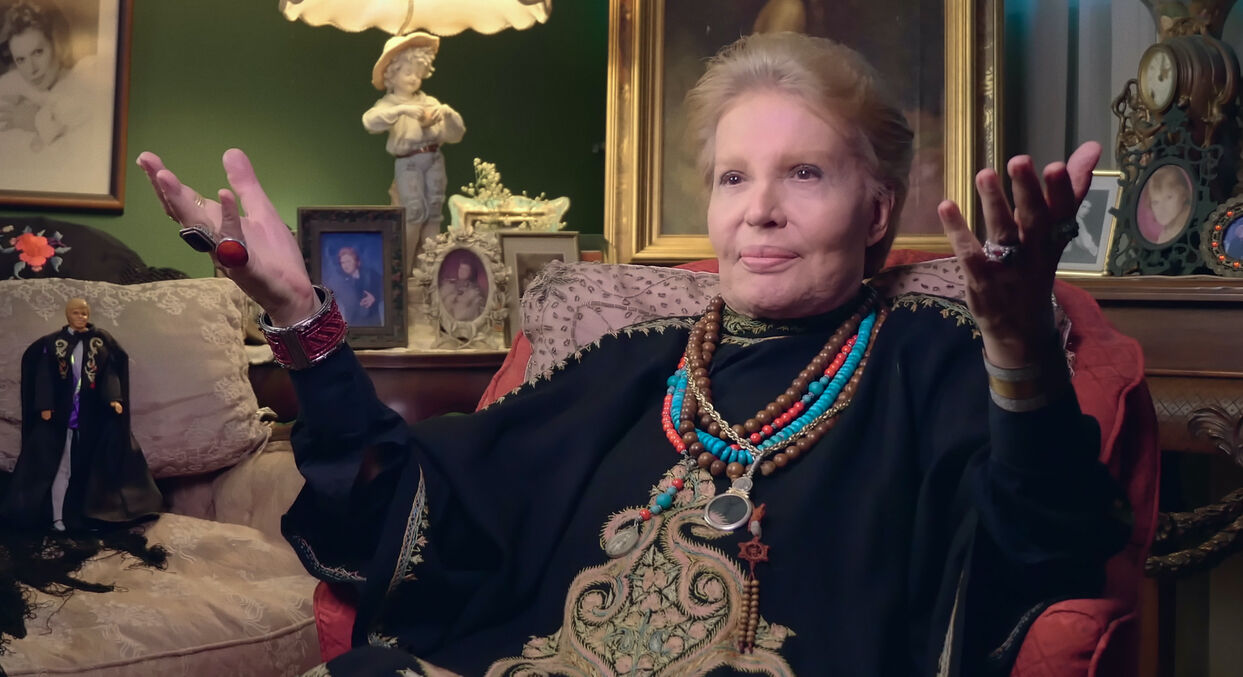Legendary queer icon Walter Mercado was best known for his daily astrology readings on Spanish-language television around the globe. Though he always felt he had a supernatural gift, he was widely known as a dancer and actor before he became irrevocably linked with the stars. In fact, his big break as an astrologer occurred during what was originally supposed to be a poetry reading.
In the Netflix documentary Mucho Mucho Amor: The Legend of Walter Mercado, he explains that he went to the University of Puerto Rico to study dancing — which he credits for his amazing stage presence and iconic gestures during his readings. During that time, he also acted in a number of plays and television programs. Early on, Mercado emerged as an in-demand, handsome, and talented performer, even becoming a fixture in telenovelas. But it was in 1969 when his career was about to explode.
Related:
Salsa’s “singer of singers” Héctor Lavoe left behind a complicated bisexual legacy
How do you memorialize a queer musician who wasn’t publicly out during his lifetime?
Never Miss a Beat
Subscribe to our newsletter to stay ahead of the latest LGBTQ+ political news and insights.
Mercado was performing in Puerto Rico, appearing at the Ateneo Puertorriqueño in a play called El Tríptico Del Amor, Del Dolor Y De La Muerte (The Triptych of Love, Pain and Death) written by Chicana playwright Clara Cuevas. He was invited to appear on Elin Ortiz’s Telemundo program to promote the play by reading some of Cuevas’ verses. Mercado turned up, dressed in character as a Hindu prince in a white cape and makeup.
But that day, Ortiz had a problem. Before Mercado’s planned performance, a singer, Camilo Sesto, was due to appear but hadn’t shown up. Needing to fill the time, Ortiz asked Mercado to fill in, talking about one of his favorite subjects.
“I was dressed in a full cape with rings on every finger. I even had a third eye painted in the middle of my forehead. I sat down to do the 15-minute segment with Elin Ortiz when he says, ‘I don’t want to talk about your play. I want to talk about what you always talk about since I’ve met you.’ I said, ‘What?’ He said, ‘Astrology, tarot, palm readings, and anything that has to do with metaphysics, so the world knows who the real Walter Mercado is,’” Mercado told Remezcla in 2019.
The segment was a hit, and the station received a deluge of calls wanting more. Mercado’s fill-in segment immediately turned into a daily 15-minute segment on Ortiz’s show. After three months, Mercado got his own hour-long program, Walter, Las Estrellas Y Usted (Walter, the Stars and You). Mercado’s astrology wasn’t the only thing that made the leap from that initial appearance — from that moment on, he would be rarely seen without one of his beautiful, ostentatious capes.
Mercado’s flamboyance and positive messages made him a hero to many around the world, including to many queer kids. As LGBTQ+ activist Karlo Karlo says in Mucho Mucho Amor, “Growing up as a gay boy and watching Walter Mercado gave me hope.”
Despite his status as a queer icon, Mercado never came out. When interviewers on television would ask him point blank if he was gay, he would say he was married to the public and his fans. Even near the end of his life, Mercado said he didn’t need people for an “orgasmic experience.”
“I have sexuality with the wind, with the flowers in the garden, with all the beautiful display of nature,” he said in Mucho Mucho Amor. “I have sex with life. I have sex with everything: with clothes, with beauty.”
He said he was a virgin. His longtime assistant and friend Willie Acosta also said that, despite living together and sharing rooms on tour, they’d never had any sort of physical relationship.
“My relation with Walter is a very family relation. I have never touched Walter with a finger,” Acosta said in the documentary.
While Mercado’s flamboyance made him the butt of gay jokes during the height of his fame, many think that he was ahead of his time.
“Imagine there was, like, a 20-year-old right now, who was like ‘I’m gonna read you your horoscope. I’m nonbinary and asexual.’ Are you kidding me? They’d be the biggest thing on Instagram!” Curly Velasquez said in Mucho Mucho Amor.
Shortly before his death of kidney failure in 2019, Mercado got to see just how much he meant to people — including his fame among millennials who grew up watching him on television with their abuelas. He was the subject of a 50-year retrospective at HistoryMiami Museum, and for the opening of the exhibit, he got to address his fans from an ornate and gilded throne, and pose for selfies with his adoring fans.
Though Mercado’s physical form is gone, he lives forever in the hearts of millions, through his vast television archives and, of course, many, many memes.















